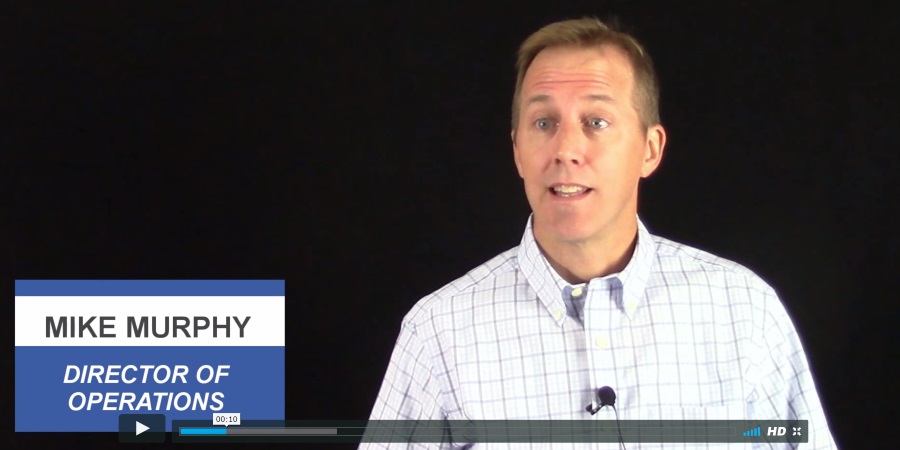by Heather Reed | CFI Group | October 05, 2017
USAFA Lieutenant General Jay Silveria’s forceful speech September 29 against racial slurs is a helpful template for any leader who may face a similar situation in their organization. Here are seven observations of what Lt. Gen. Silveria did in his speech to make it such a compelling address.
By now, we have all heard of Lieutenant General Jay Silveria’s forceful speech on September 29 to 4,000 cadets and 1,500 staff members at the U.S. Air Force Academy (USAFA) in Colorado Springs. The widely-celebrated talk was initiated in response to racial slurs written on dry erase boards outside the USAFA dorm rooms of five USAFA students.
Lt. Gen. Silveria’s remarks have been enthusiastically embraced across the country. USAFA’s YouTube video of the address (below), for example, has over 1M views and over 20K “Likes.” The brief speech was a clear and emphatic reminder of the values upheld by the Air Force.
We have an opportunity here, 5,500 people in this room, to think about what we are as an institution. This is our institution and no one can take away our values. No one can write on a board and question our values. No one can take that away from us.
The day after the remarks, Lt. Gen. Silveria told NPR’s Scott Simon that he wanted the cadets to understand in a “very unambiguous” and “very clear” way that the “hateful” language is “reprehensible” and “disgusting.” He went on to say that the language “does not embrace our values as an Air Force” and it “is not going to take away our values or threaten our institution.”
My team and I do a lot of work with government organizations to assess and resolve potential workplace climate issues, so I eagerly listened to and re-read the speech to break down what exactly makes this speech so compelling and effective.
I have seven observations of what Lt. Gen. Silveria did well in his speech that can be instructive for any leader who very likely may face a similar situation in their organization.
1. ADDRESS THE ISSUE DIRECTLY
"Ladies and gentlemen, you may have heard that some people down in the prep school wrote some racial slurs on some message boards. If you haven’t heard that, I wanted you to hear it from me."
When a problem occurs, there is a natural temptation to address it quietly, for fear that making it more public will exacerbate the problem. Most often, however, the issue festers or metastasizes under the surface. Addressing the issue head on takes time, effort, and attention, but brings an issue into the open where it can be resolved.
2. STATE YOUR POSITION BOLDLY
"If you’re outraged by those words then you’re in the right place. That kind of behavior has no place at the prep school, it has no place at USAFA, and it has no place in the US Air Force. You should be outraged, not only as an airman, but as a human being."
Employees need to see your position in bright, clear colors. This is no time for equivocation. Leaders may think the point is obvious, or that said once is sufficient to make the point. Instead, consider sharp, vivid language that cannot be misunderstood. Make the point forcefully, even if you think the position is obvious and understood. State the obvious clearly. Your position may not be obvious to everyone, and it is worth repeating as a reminder.
3. DEMONSTRATE LEADERSHIP UNANIMITY
"That’s why all these people are up here on the staff tower. . .These are members of the faculty, coaching staff, AOC’s, AMT’s, from the airfield, from my staff, from my headquarters, all aspects of the 10th Airbase Wing, all aspects that make up USAFA and the United States Air Force Academy leadership is here."
The importance of the message is unmistakable when leadership shows up to take the stand. Few things are more powerful for employees than seeing leadership adamantly steadfast and aligned in agreement on a position.
4. REITERATE CORE VALUES
"It’s about our diversity, and it's the power of the diversity, the power of the 4,000 of you and all of the people that are on the staff tower and lining the glass, the power of us as a diverse group, the power that we come from all walks of life, that we come from all parts of this country, that we come from all races, we come from all backgrounds, gender, all makeup, all upbringing. The power of that diversity comes together and makes us that much more powerful."
Condemning a despicable act is important; but it is also critical to return to the core value affected by the act. Leaders must continually articulate the core values of the organization and reiterate the power of those values.
5. DRAW EVERYONE TOGETHER
"We have an opportunity here, 5,500 people in this room, to think about what we are as an institution. This is our institution and no one can take away our values. No one can write on a board and question our values. No one can take that away from us."
After verbalizing the core values, make a call to listeners to come together around those core values. Remind them that they are stewards of the organization, and they must define it and defend it from those who would lead it astray.
6. RESTATE YOUR POSITION
"So just in case you’re unclear on where I stand on this topic, I’m going to leave you with my most important thought today: If you can’t treat someone with dignity and respect, then you need to get out. If you can’t teach someone from another gender, whether that’s a man or a woman, with dignity and respect, then you need to get out. If you demean someone in any way, then you need to get out. And if you can’t treat someone from another race or a different color skin with dignity and respect, then you need to get out."
Remember to end the message by going back to your primary position. Present a clear ultimatum for anyone unable to subscribe to the position, making it crystal clear that the position is immovable and nonnegotiable, and any deviation will not be tolerated.
7. TELL THEM WHAT DO TO NEXT
"Reach for your phones. I’m serious, reach for your phones. OK, you don’t have to reach for your phones, I’m going to give you an opportunity to reach for your phones. I want you to videotape this so that you can have it, so that you can use it, so that we all have the moral courage together, all of us on the staff tower lining the glass, all of us in this room. This is our institution, and if you need it, and you need my words, then you keep these words. And you use them and you remember them and you share them and you talk about them. If you can’t treat someone with dignity and respect, then get out."
Finally, be sure to end with a specific action to take. Employees should walk away with a clear sense that they know what to do, and that you expect them to do it. Try to isolate one core action; it enables your listeners to take away a clear sense of what to do next.
In giving his speech, Lieutenant General Jay Silveria had the long run in mind. “These are unbelievable young men and women who have signed up to serve our nation. And they're going to be leaders in the Air Force. They're going to be officers, and they're going to lead airmen in the battlefield. And so I wanted to make it clear that they have to consider diverse thought and diverse ideas.”
Leaders in any organization have a remarkable opportunity—a duty, even—to shape the organization and prepare the next generation of leaders. Effective speeches are one instrument leaders have to instill in their people the values and ideals that are at the core of the organization and to sustain the organization for decades to come.
CFI Group works with government agencies and private companies to help organizations assess and manage an effective workplace environment that allows employees to thrive. Contact us to hear more about what CFI Group can do for you and your organization.
Other Resources
- Date
- December 14, 2021
by David Ham December 15, 2021 As the pandemic continues, so do instances of rude behavior. Anne Marie Chaker summarized this phenomena rather well in her […]- Date
- November 23, 2021
by Rebecca Lennington| November 23, 2021 It’s “the most wonderful time of the year” again. We’re celebrating our second holiday season with everyone’s least favorite guest, […]- Date
- October 5, 2017
Executives should manage customer expectations, rather than raise the bar too high, at the first interaction.- Date
- August 3, 2017
227804511 ;c;; AUTHOR by Mike Murphy | August 03, 2017 no-repeat;center top;; auto 0px 15 default default AUTHOR Creating a culture where employees feel relaxed, empowered, […]






